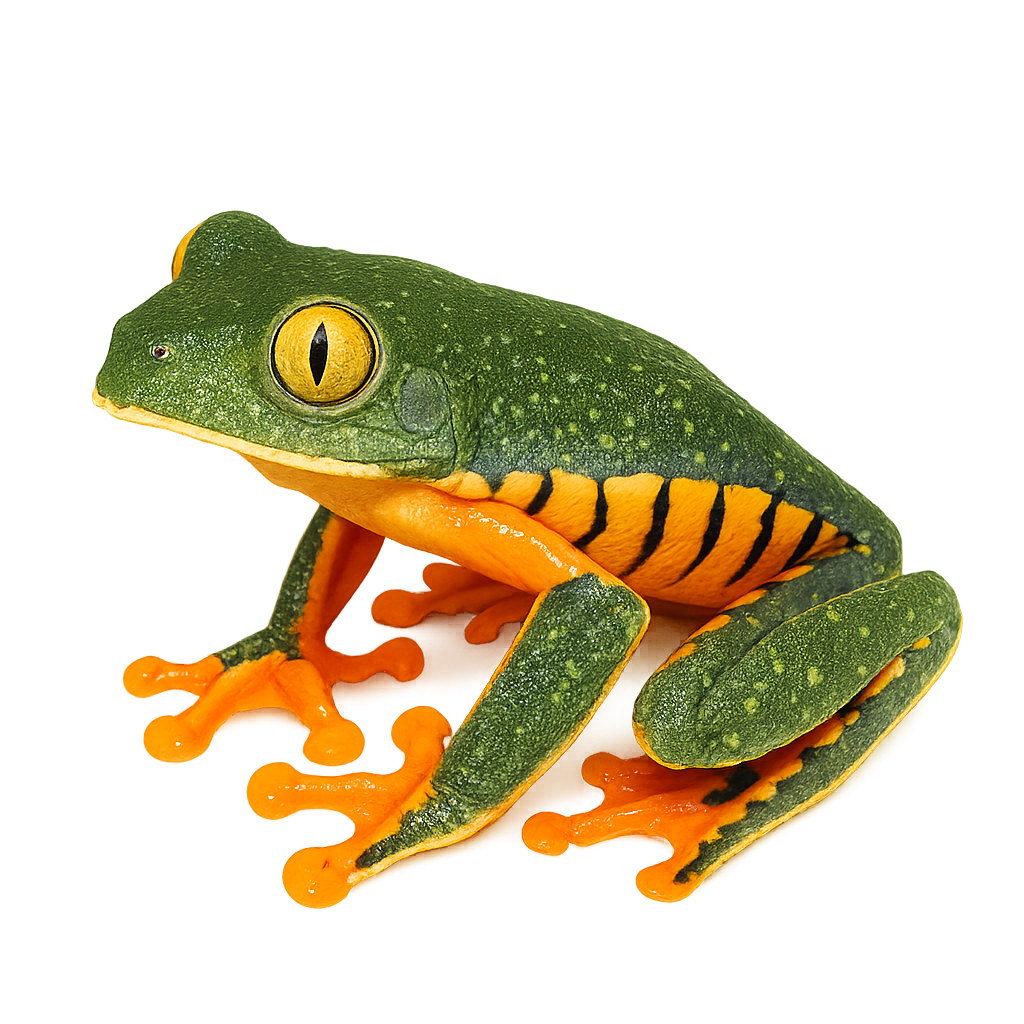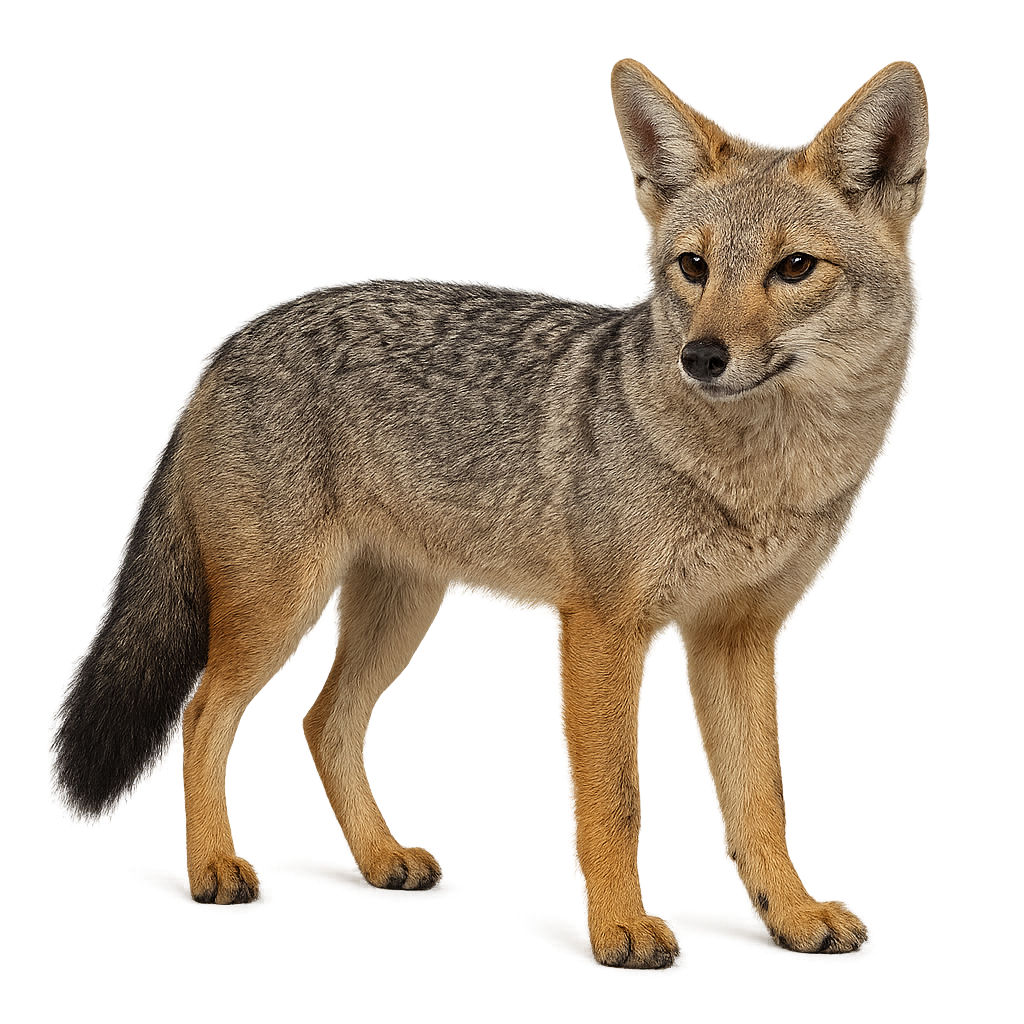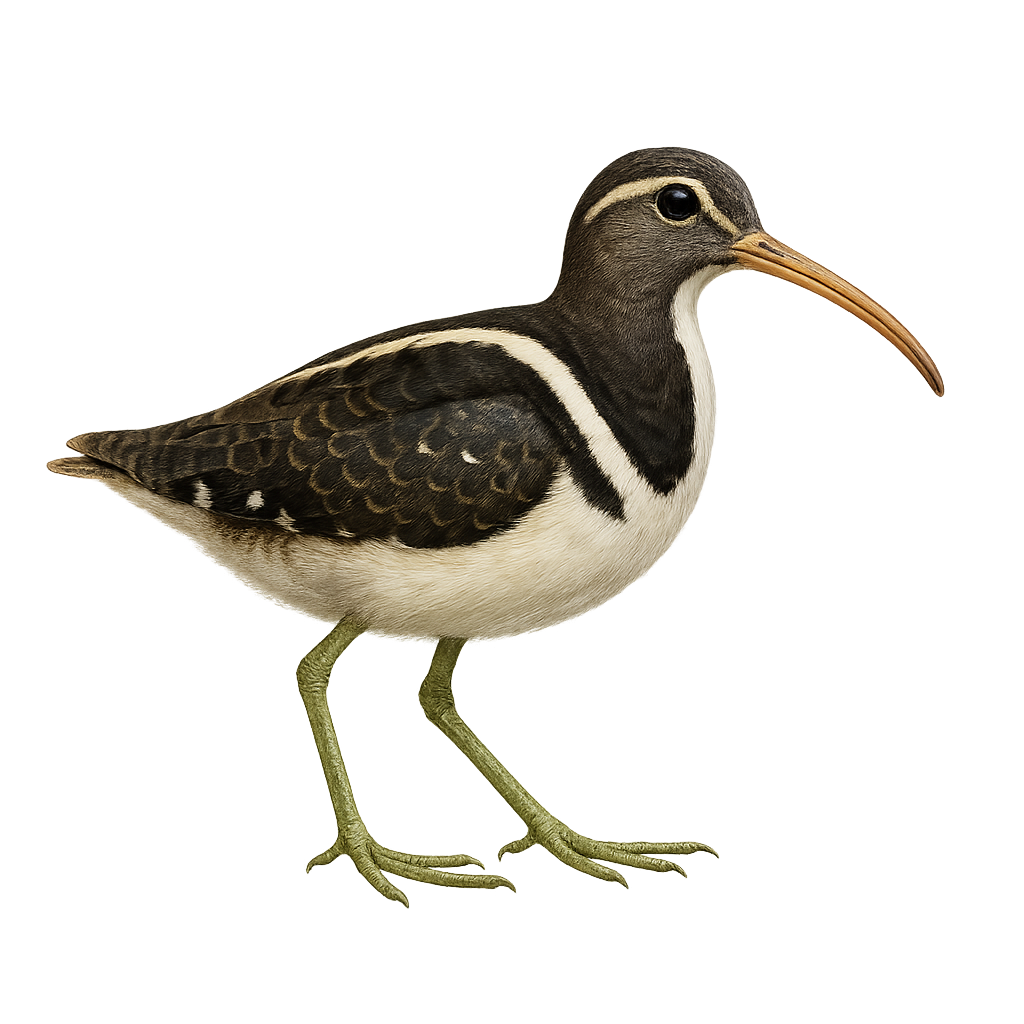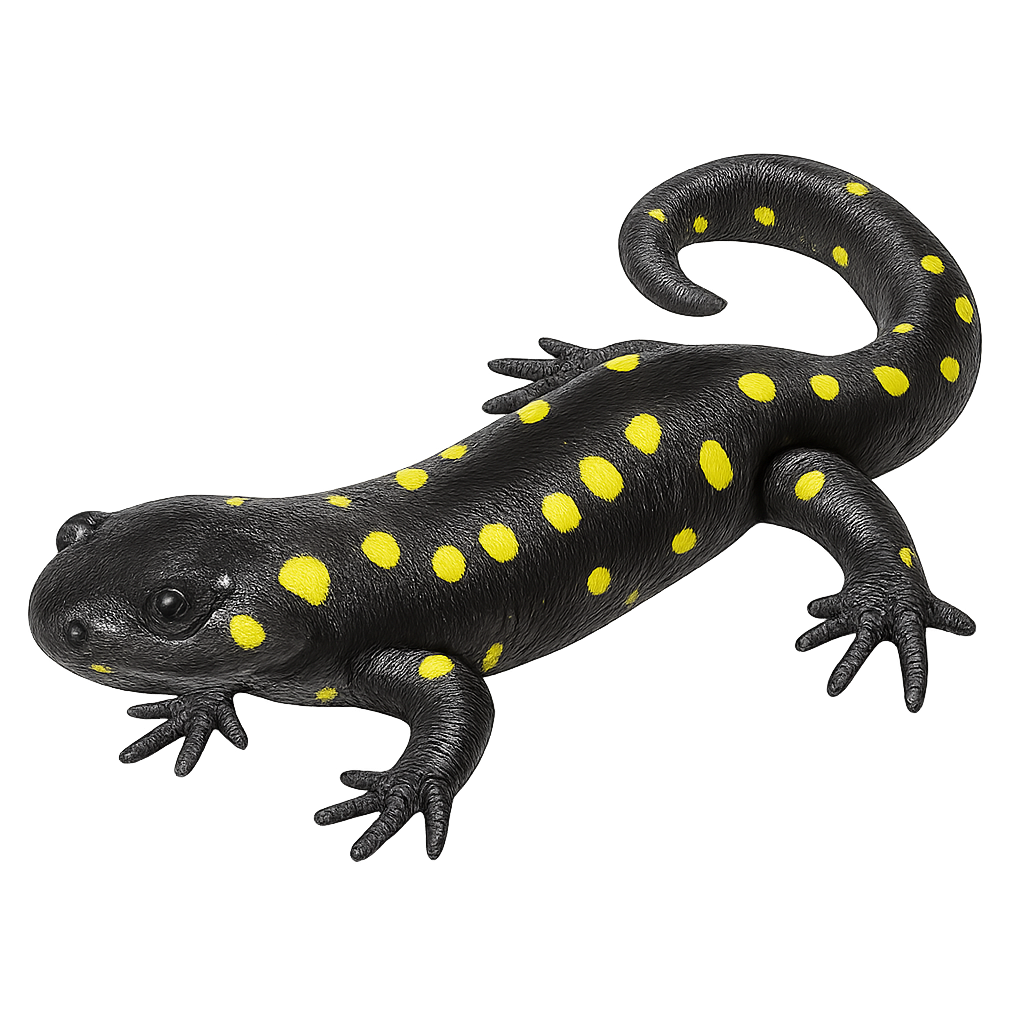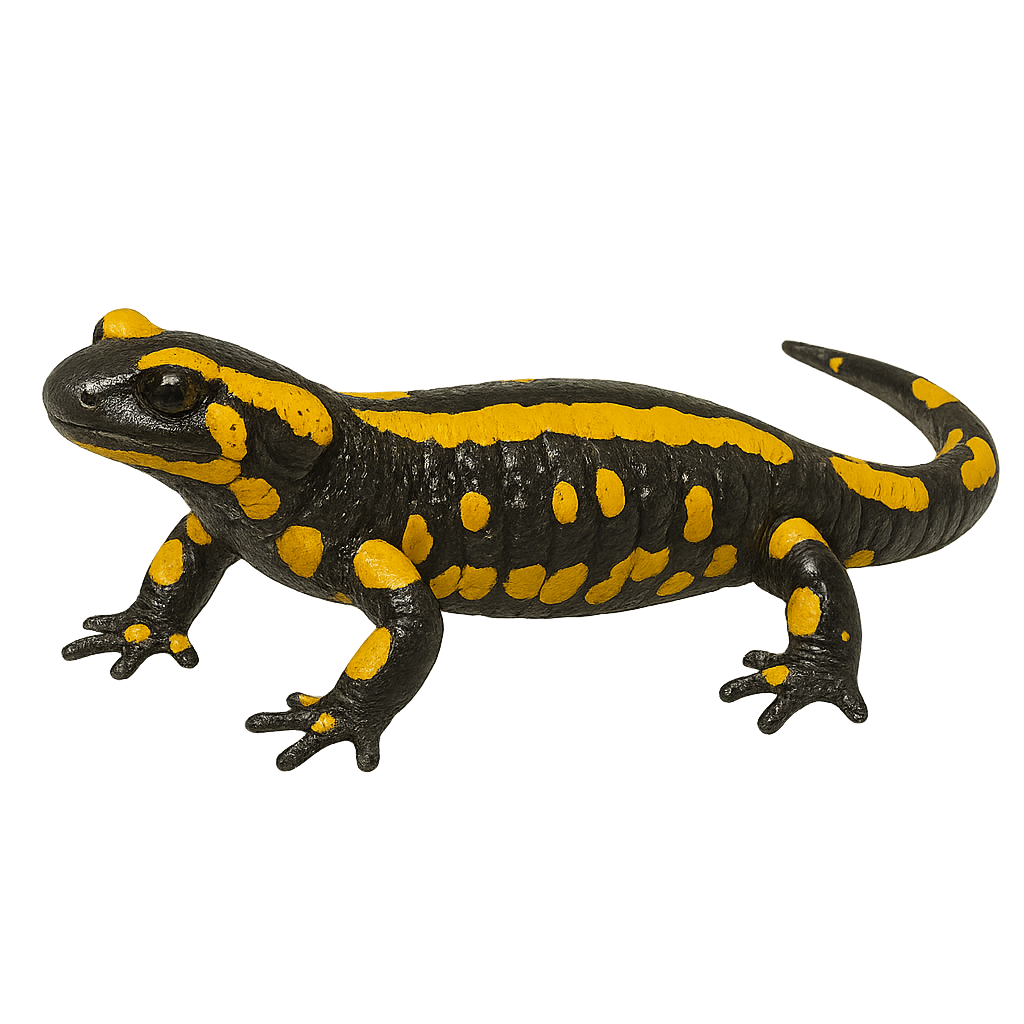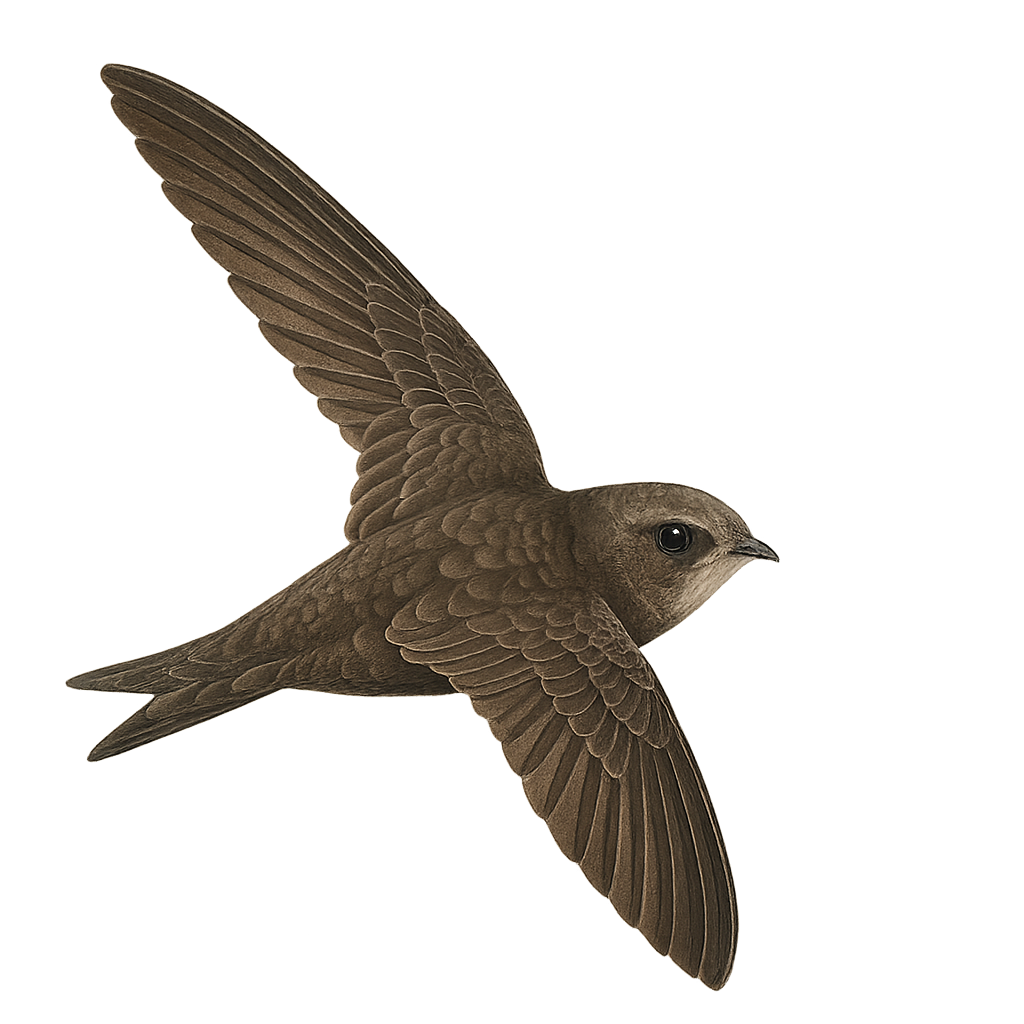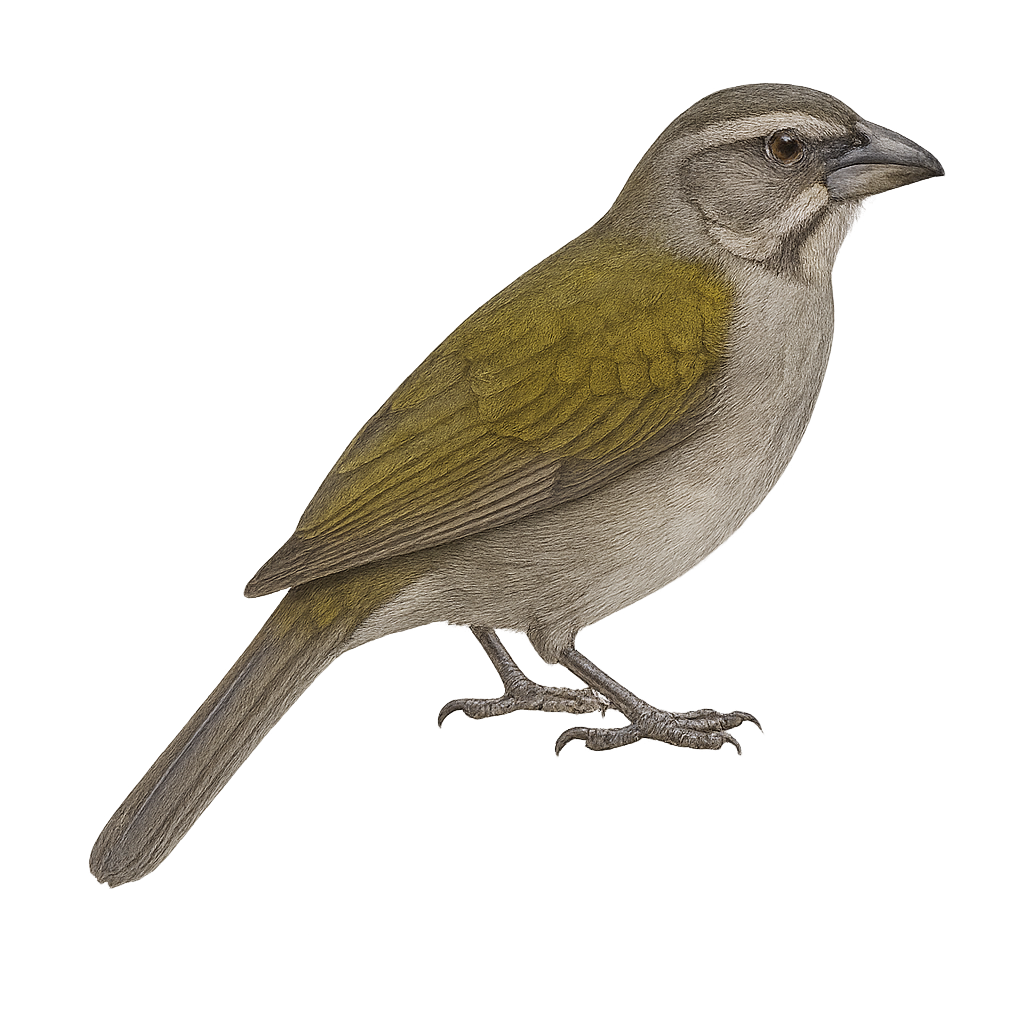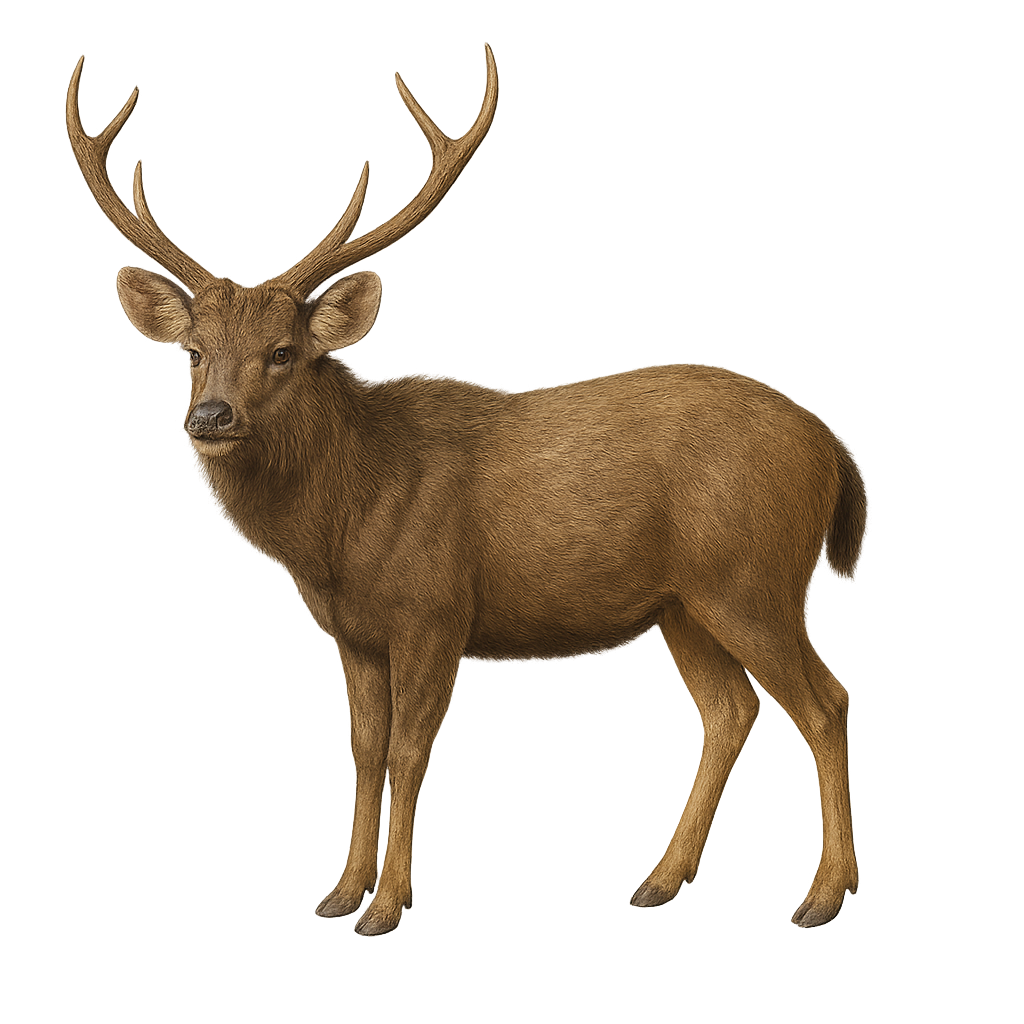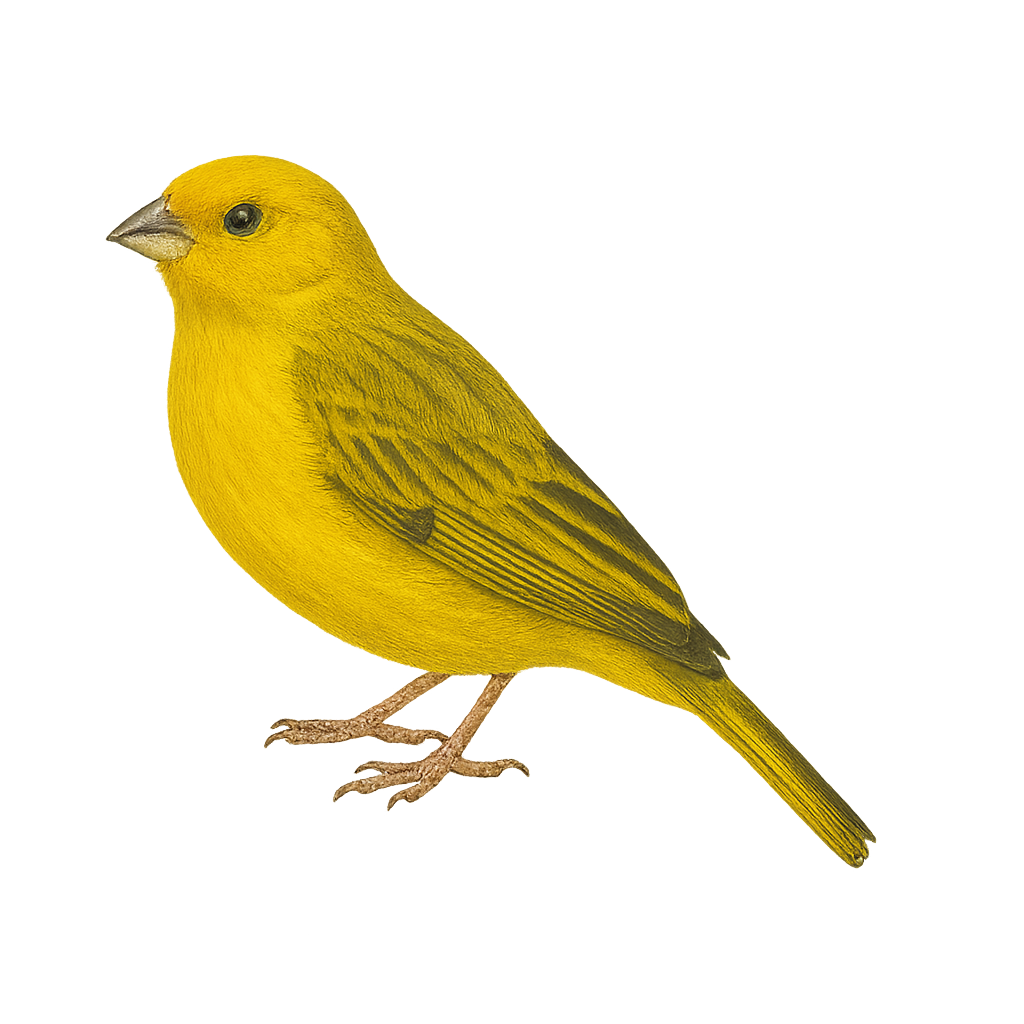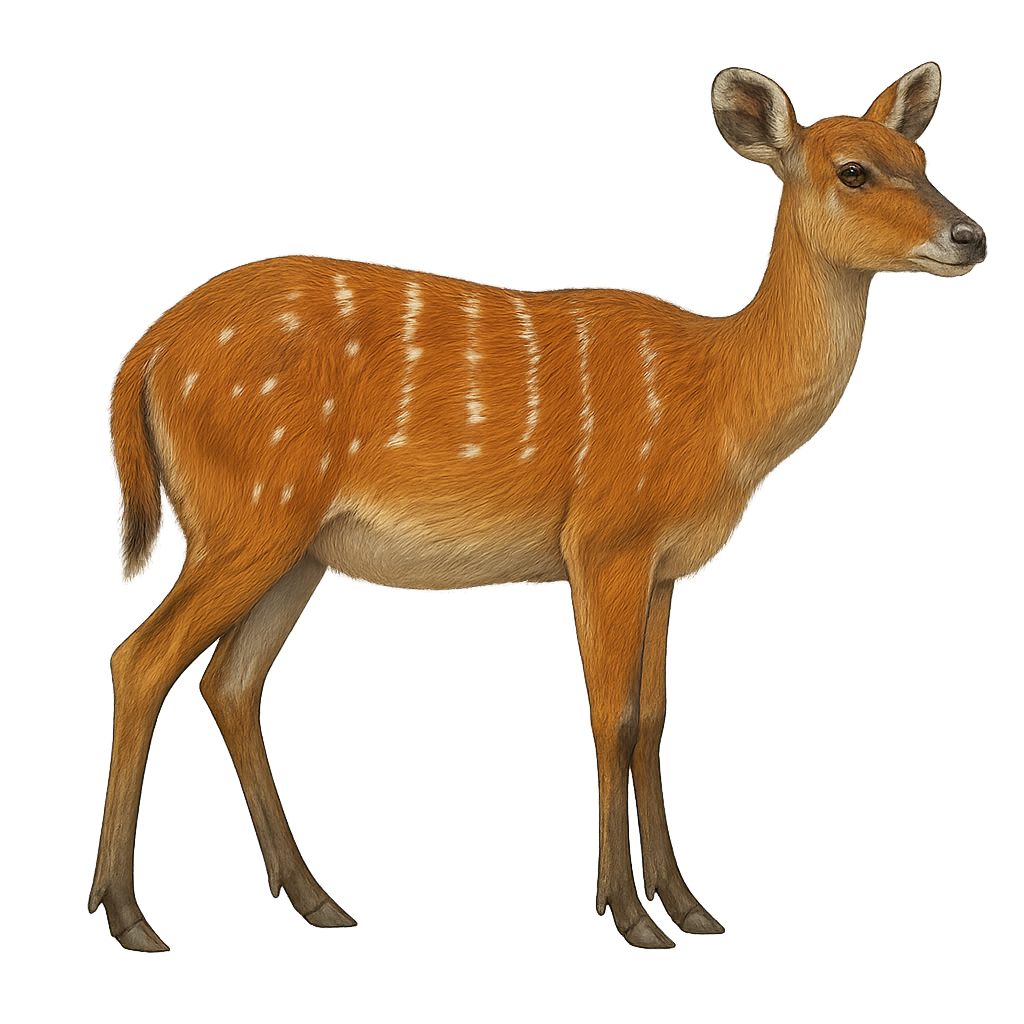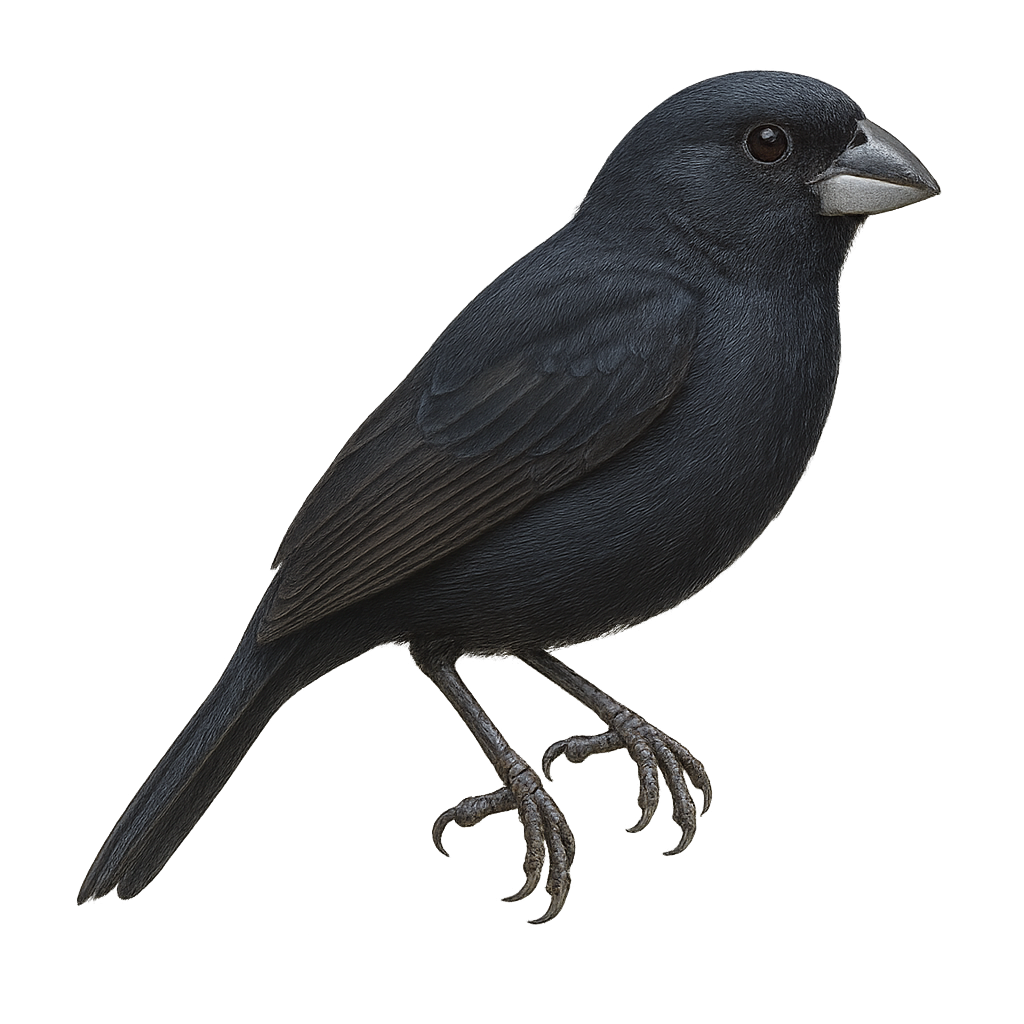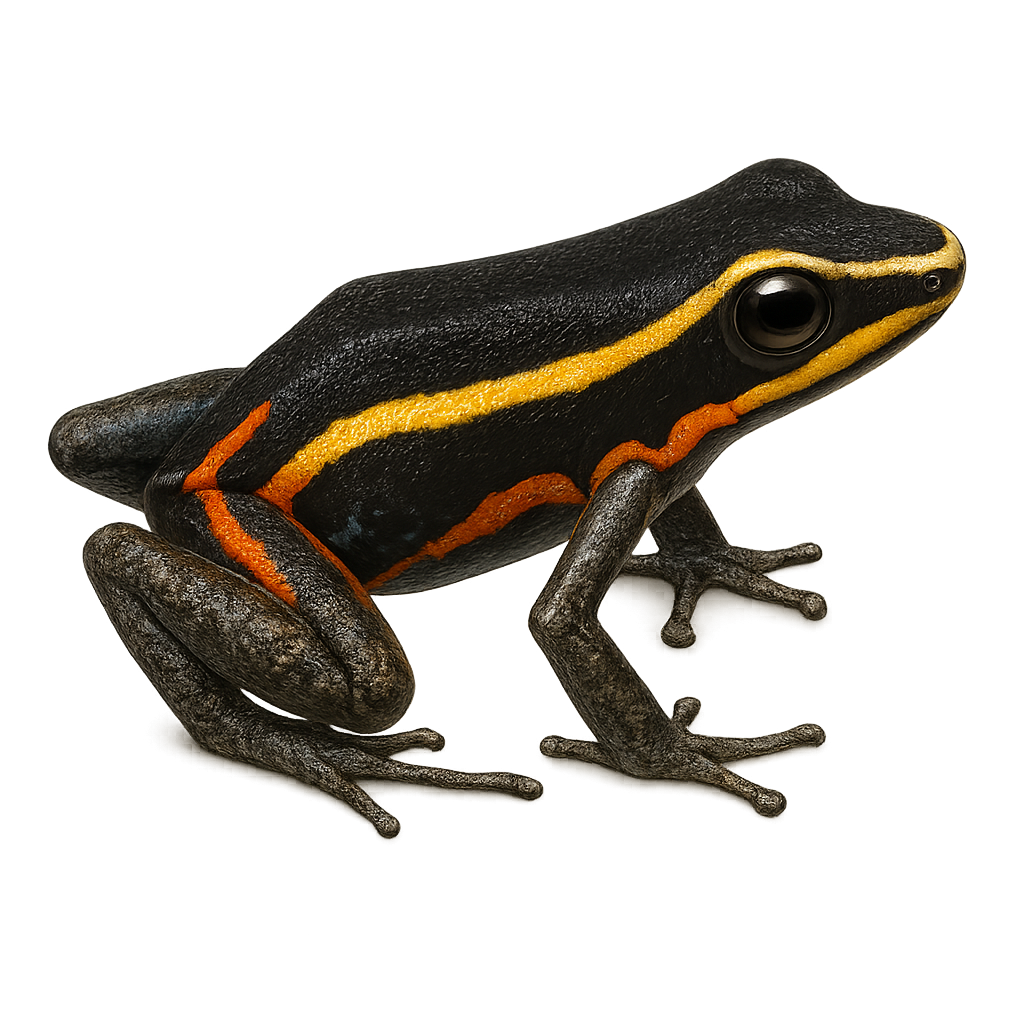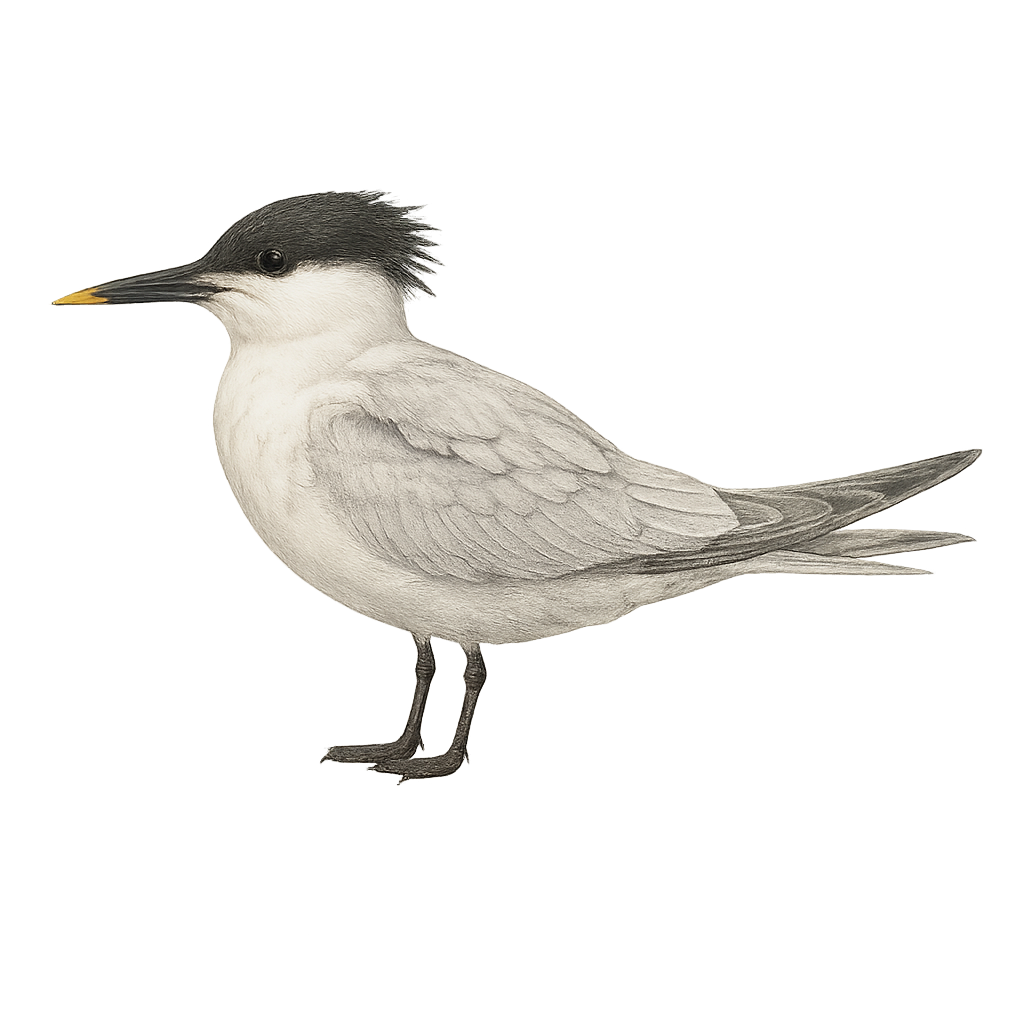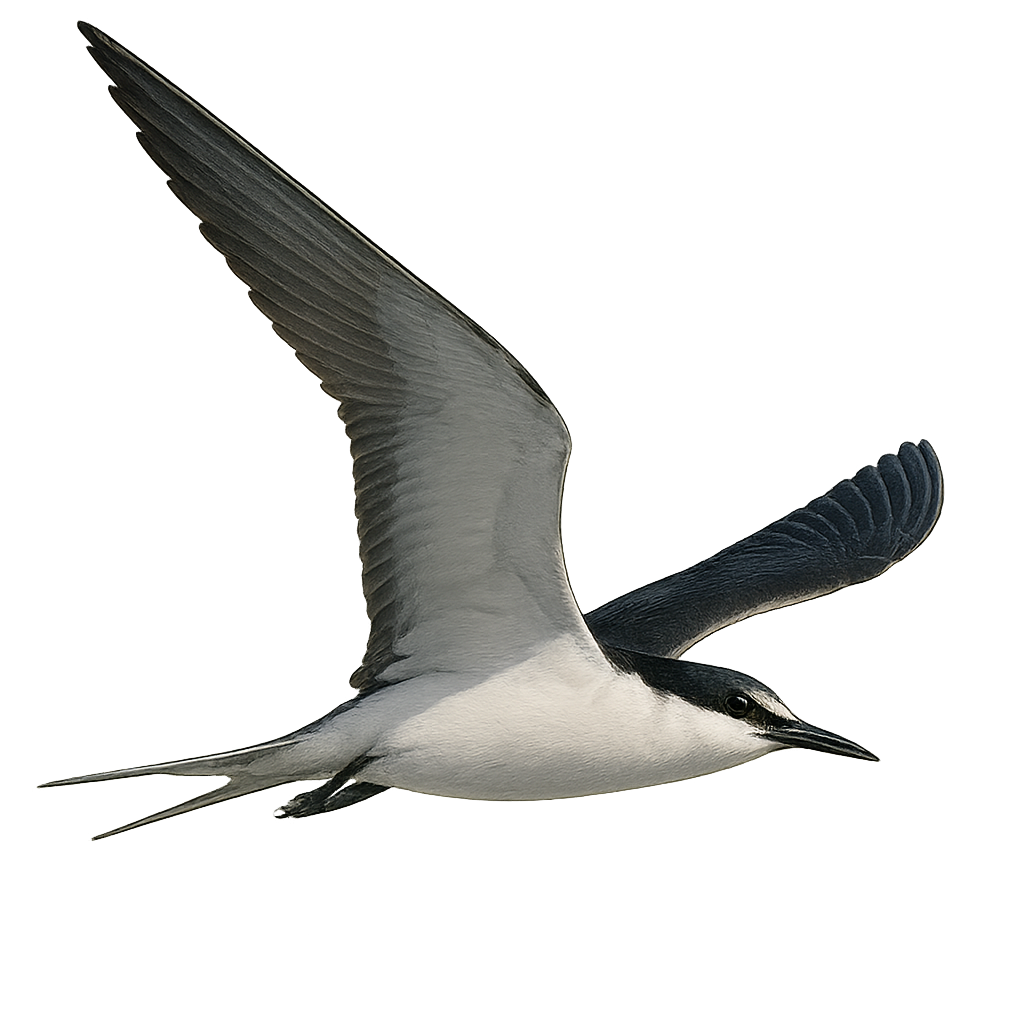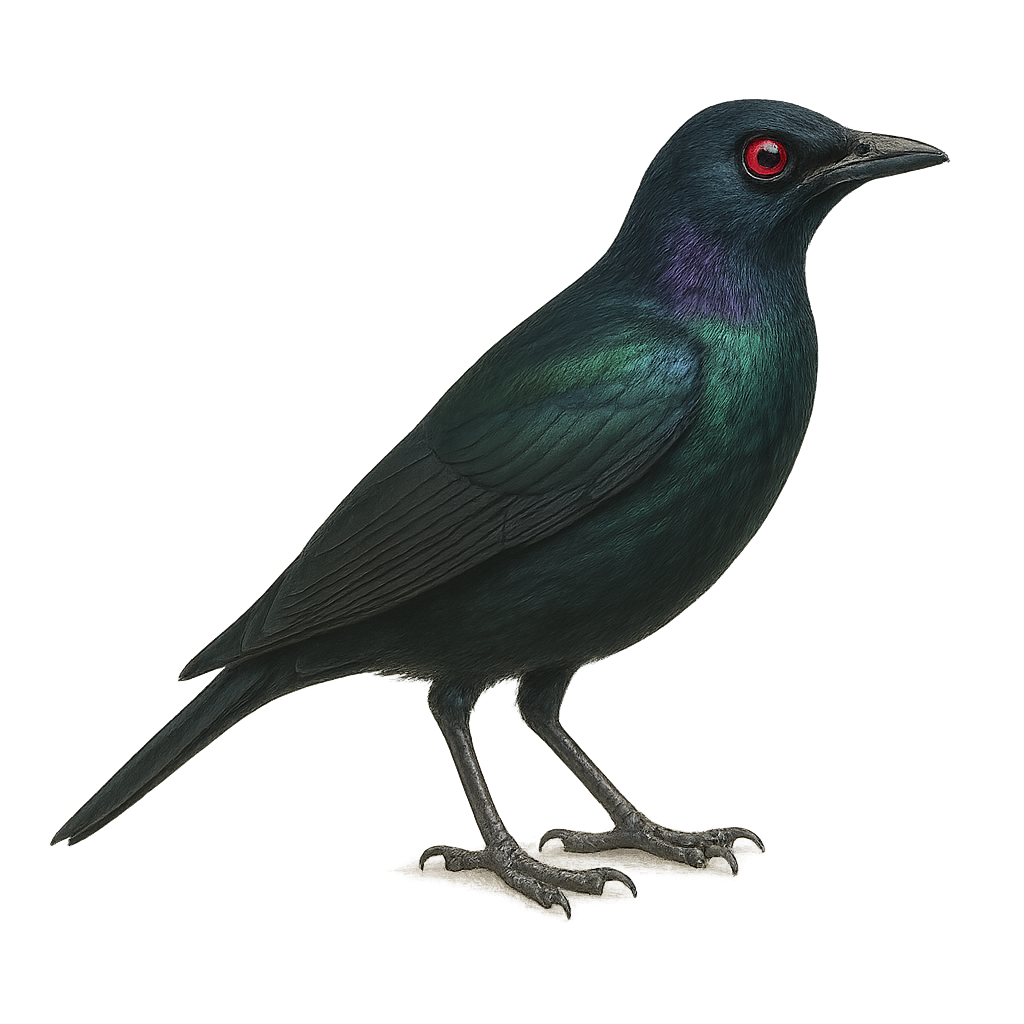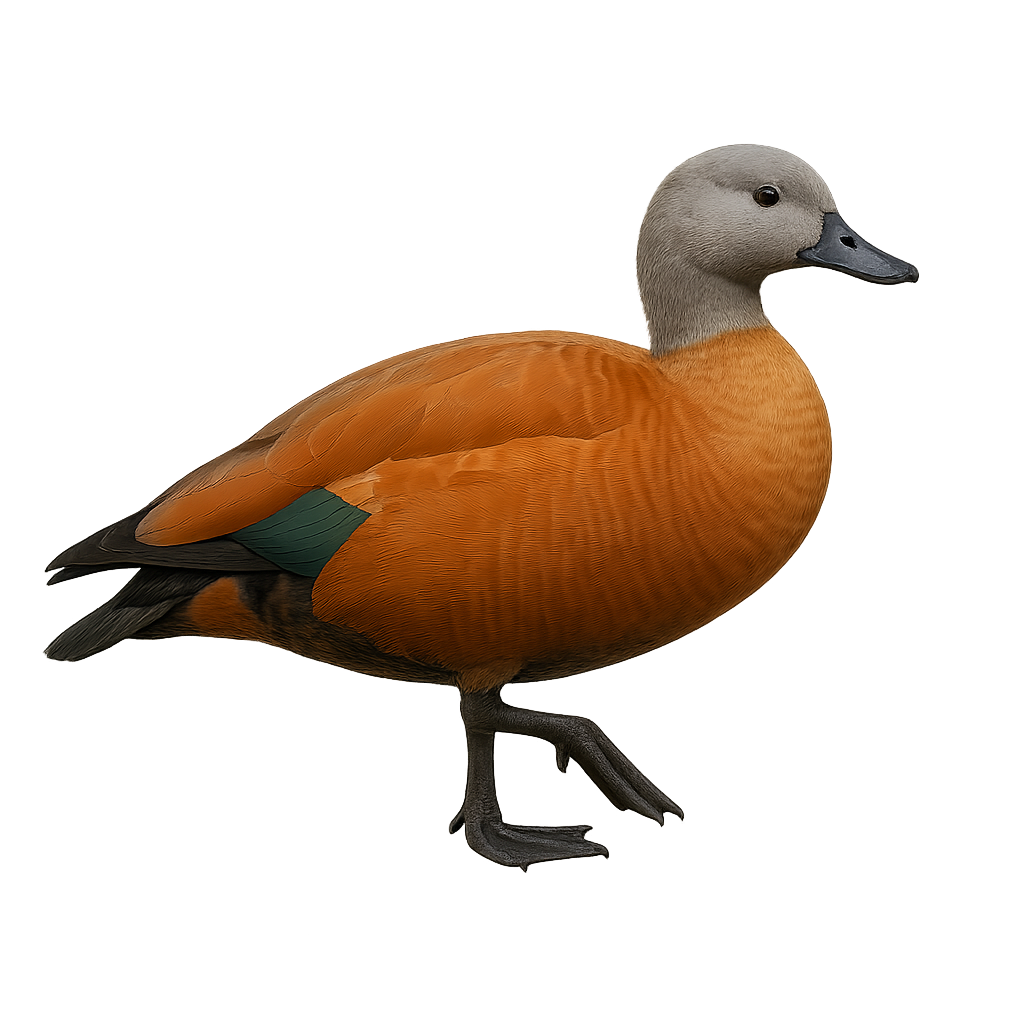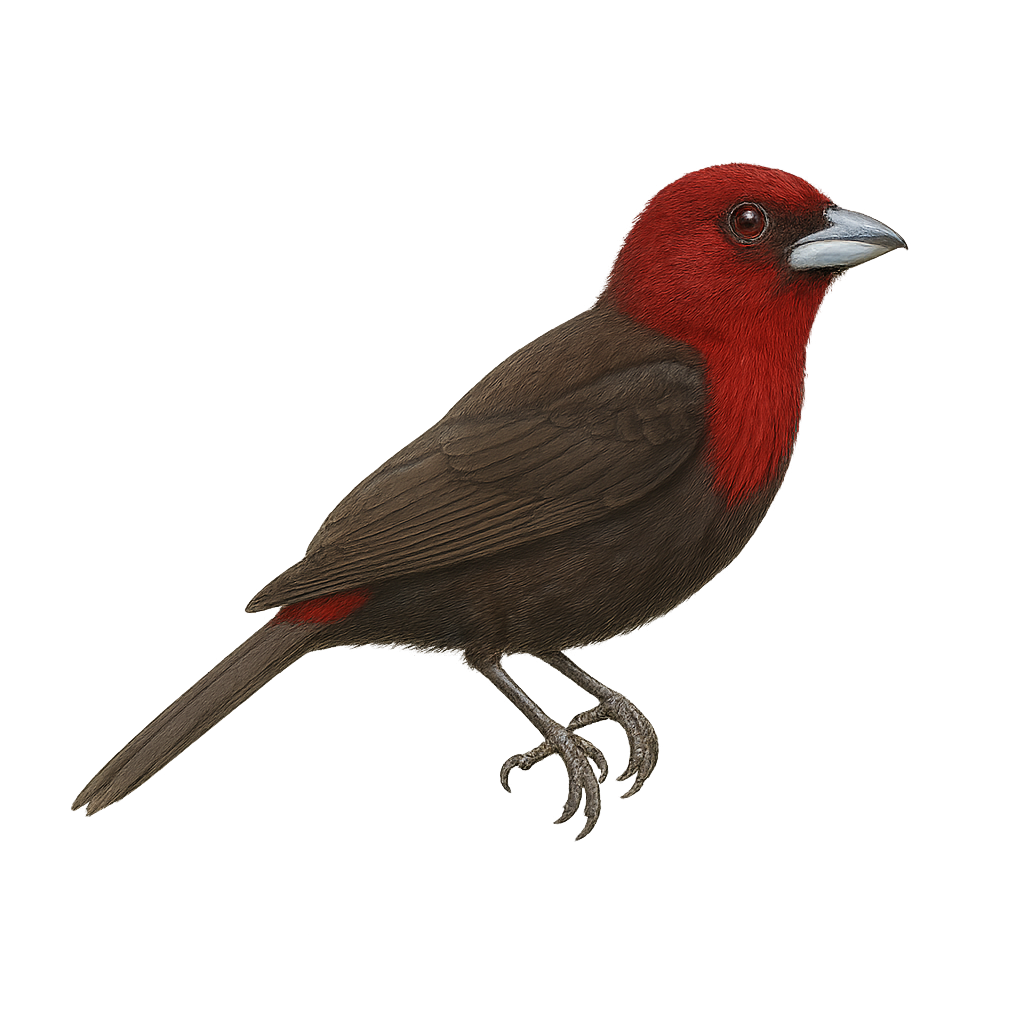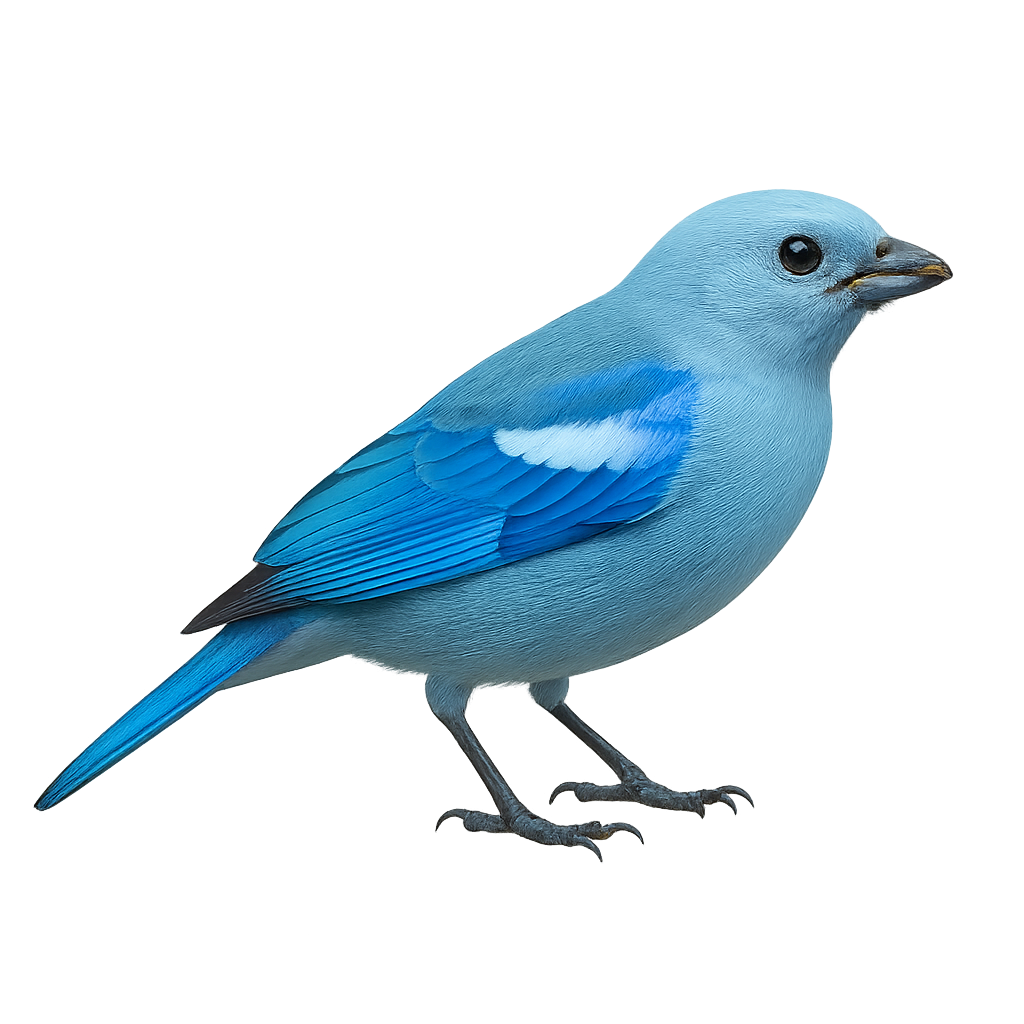Cruziohyla calcarifer, known as the splendid leaf frog, is a captivating species within the Hylidae family. It is distinguished by its vibrant coloration, featuring an emerald green back speckled with yellow spots and flanks adorned with blue and black patterns. This frog also boasts prominent eyes and webbed feet, adapted to its arboreal lifestyle. It primarily inhabits the humid tropical forests of Central America, where it skillfully camouflages among the leaves. Nocturnal, it feeds on insects and other small invertebrates. Although its habitat is threatened by deforestation, it is currently classified as "Least Concern" by the IUCN.
The South American Gray Fox, or Lycalopex grisea, is a medium-sized canid native to South America. It is characterized by its silvery-gray fur, pointed ears, and bushy tail. This fox is well adapted to various environments, from arid plains to temperate forests. It is omnivorous, feeding on small mammals, birds, insects, and fruits. Although often solitary, it can be seen in small family groups. Its ability to adapt to different habitats and diets makes it a resilient species. However, it is sometimes threatened by hunting and habitat loss.
The Southern White Rhinoceros is a large herbivorous mammal primarily found in the savannas and grasslands of Southern Africa, notably in South Africa, Botswana, Zimbabwe, and Namibia. It is one of the largest species of rhinoceros, measuring up to 4 meters in length and weighing between 1,500 and 2,400 kg. It is distinguished by its large square-shaped mouth, adapted for grazing, and its light gray to grayish skin. The Southern White Rhinoceros is a strict herbivore, primarily feeding on grass, though it may occasionally consume leaves and fruits. While its population has long been threatened by poaching and habitat loss, thanks to conservation efforts, its population has made a remarkable recovery and remains relatively stable.
The Sumatran Rhinoceros is a critically endangered species of rhinoceros found primarily on the island of Sumatra in Indonesia. It measures about 2 to 3 meters in length, with a tail of 60 to 70 cm, and weighs between 500 and 800 kg. Its fur is generally light brown or reddish, with thick, wrinkled skin. This rhinoceros is one of the smallest members of the rhinoceros family and has two horns. The Sumatran Rhinoceros is herbivorous, feeding on leaves, fruits, roots, and shoots. It primarily lives in tropical lowland forests and swampy areas. While conservation efforts have been made to protect this species, it remains threatened by deforestation, poaching, and habitat loss, with a population estimated to be fewer than 80 individuals in the wild.
The South American Painted-snipe, or Nycticryphes semicollaris, is a medium-sized aquatic bird known for its distinctive plumage and elusive habits. It features brown plumage with white and black patterns and a partial collar that gives it its name. This bird is primarily nocturnal and crepuscular, feeding on insects and small invertebrates found in wetlands. It is mainly found in South America, particularly in Argentina, Paraguay, and southern Brazil. The South American Painted-snipe prefers marshes, wet meadows, and lake edges, where it can easily blend in with its surroundings. Although its conservation status is not of concern, it is often difficult to spot due to its discreet behavior and often inaccessible habitat.
The saiga is an antelope from the Central Asian steppes, recognizable by its prominent, trunk-like nose that filters dust and warms inhaled air. Adapted to arid environments, it migrates in large herds in search of pastures. Its population, once declining, shows signs of recovery due to conservation efforts.
The spotted salamander is an urodele amphibian, 15–25 cm long, with a jet-black back marked by bright yellow spots. It inhabits humid deciduous forests and migrates by night to ephemeral pools in early spring to breed.
The Spotted Salamander is an amphibian primarily found in forests and wetlands across Europe, particularly in France, Spain, and Germany. It typically measures between 15 and 25 cm in length, although some specimens can reach up to 30 cm. Its body is black with bright yellow spots, making it easily identifiable. The Spotted Salamander is a nocturnal and terrestrial animal, hiding during the day under rocks or in holes in the ground to protect itself from the heat. It is carnivorous and feeds primarily on insects, worms, small crustaceans, and other invertebrates. While it remains relatively abundant in certain regions, this species is threatened by water pollution, habitat destruction, and climate change.
The Seychelles Swiftlet, or Collocalia elaphra, is a small bird endemic to the Seychelles islands. This member of the Apodidae family is characterized by its brownish-grey plumage and its ability to fly swiftly and agilely. It primarily feeds on insects caught in flight. Seychelles Swiftlets often nest in caves or cliffs, using their saliva to build nests. Their population is relatively stable, though confined to their insular habitat. These birds are particularly active during the day, often flying in groups. Their behavior is generally suspicious, making observation challenging for amateur ornithologists.
The Streaked Saltator, scientifically known as Saltator albicollis, is a medium-sized bird belonging to the Thraupidae family. It is characterized by its olive-green back and white throat, which gives it its name. Its chest is gray with dark streaks, and it has a strong beak suited for its primarily seed-based diet. Found mainly in the tropical and subtropical forests of Central and South America, it is often seen in small groups. Although relatively discreet, its melodious song is easily recognizable. This bird plays an important role in seed dispersal, aiding in forest regeneration.
The sambar, or Cervus unicolor, is a large deer native to South and Southeast Asia. It is recognizable by its dark brown coat and impressive antlers in males. Sambars primarily inhabit dense forests, grasslands, and swamps, feeding on leaves, fruits, and bark. They are generally solitary or live in small family groups. The sambar is a crepuscular animal, active mainly at dawn and dusk. Although hunted for its meat and antlers, it remains relatively widespread in its natural habitat. However, deforestation and overhunting threaten some local populations.
The Santander poison frog is a small, brightly colored frog endemic to the humid tropical forests of Colombia. It is distinguished by its shiny skin, often a striking blue with black patterns, making it a fascinating specimen for herpetologists and nature enthusiasts. This species is known for its territorial behavior and its ability to produce powerful toxins, used as a defense mechanism against predators. It primarily inhabits dense, humid undergrowth, where it feeds on insects and other small invertebrates. Its survival is threatened by deforestation and the loss of its natural habitat, making it vulnerable according to IUCN criteria.
Excidobates captivus is a species of poison dart frog endemic to the humid rainforests of Peru. This small amphibian, measuring about 2 to 3 cm, is known for its bright coloration, typically a mix of yellow, black, and sometimes blue, which warns predators of its toxicity. Its skin secretes potent alkaloids, used by local populations to poison arrows. It primarily inhabits dense undergrowth, feeding on small insects and invertebrates. Reproduction usually occurs during the rainy season when conditions are ideal for tadpole development. Although its population is stable, deforestation and collection for the pet trade threaten its natural habitat.
Saola
Pseudoryx nghetinhensis
The Saola, also known as the 'Asian unicorn,' is one of the rarest and most mysterious mammals on the planet, first discovered in 1992 in the mountains of Vietnam and Laos. This critically endangered cervid has spiral horns and a stealthy gait. It lives in tropical mountain forests and primarily feeds on vegetation. Due to its elusive nature and inaccessible habitat, it is very difficult to observe. It is threatened by deforestation and poaching.
The Serval is a medium-sized feline primarily found in the savannas and grasslands of sub-Saharan Africa, notably in East and Central Africa. It typically measures between 60 and 100 cm in length, with a tail of 30 to 40 cm, and weighs between 9 and 18 kg. Its coat is golden yellow, speckled with irregular black spots, which helps it camouflage effectively in its natural environment. The Serval has long legs, a small head, and large ears, which allow it to easily detect its prey, including small mammals, birds, and reptiles. It is also capable of impressive leaps to catch its prey, particularly birds in flight. While its population remains stable in some areas, the Serval is threatened by habitat loss and illegal hunting.
The Saffron Finch, or Sicalis flaveola, is a small bird with a striking bright yellow plumage, accented with olive-green shades on its wings and back. Native to South America, it is often found in savannas, agricultural areas, and urban gardens. This passerine is known for its melodious song and adaptability to various environments. Males display more vibrant colors than females, making them easily identifiable. Their diet mainly consists of seeds, but they also consume insects. The Saffron Finch is a sociable bird, often seen in small groups, especially outside the breeding season.
The sitatunga, or Tragelaphus spekii, is a semi-aquatic antelope found mainly in the marshes and wetlands of Central and East Africa. It is easily recognizable by its reddish-brown coat, vertical white stripes, and long spiraled horns in males. Sitatungas are well adapted to their aquatic habitat, with long, splayed hooves that allow them to move easily through swamps. They are primarily active at dawn and dusk, feeding on aquatic plants, grasses, and leaves. Sitatungas are shy and elusive animals, preferring to remain hidden in dense vegetation to avoid predators.
The Scarlet-chested Sunbird, Chalcomitra senegalensis, is a striking bird from the Nectariniidae family. Males are easily identified by their vivid red chest and metallic green back, while females are more subdued with brown and gray tones. They primarily feed on nectar but also consume insects, especially during breeding season. Found in diverse habitats from savannas to open forests, they often stay near water sources. Known for their swift flight and melodious songs, these birds are a delight to observe. Although their conservation status is currently of concern, they remain relatively common within their range.
The Slate-colored Seedeater, or Sporophila funerea, is a small seed-eating bird found primarily in Central America, particularly in Costa Rica and Panama. Its plumage is mostly slate-colored, with lighter shades on the belly. Males and females exhibit sexual dimorphism, with females having browner tones. This bird prefers open habitats such as grasslands and agricultural areas, where it primarily feeds on seeds. It is often seen in small groups, especially outside the breeding season. Although its song is subtle, it plays an important role in communication between individuals.
The Painted Poison Frog, Ameerega picta, is a brightly colored frog species belonging to the Dendrobatidae family. It is primarily found in the humid tropical forests of South America, particularly in Brazil, Guyana, and Suriname. This frog is distinguished by its vibrant skin, often adorned with black and yellow or red patterns, allowing it to blend effectively into its natural environment. It is diurnal and primarily feeds on small insects. Although its coloration serves as a warning to potential predators, it is not as toxic as some other species in its family. The Spot‑legged poison frog plays an important role in the ecosystem by regulating insect populations and serving as prey for other animals.
The Springbok is a small antelope found primarily in the savannas and grasslands of South Africa, Namibia, and Botswana. It typically stands about 75 cm at the shoulder, with a body length of 1.10 to 1.30 meters, and weighs between 30 and 40 kg. Its coat is primarily white and brown, with a dark line running along its back and a large white patch on its sides. What sets the Springbok apart is its ability to perform characteristic jumps, known as "pronking," where the animal leaps into the air with its legs extended, often to signal danger or to impress another individual. The Springbok is herbivorous, feeding primarily on grass and leaves. While it remains relatively abundant in its habitat, it is sometimes threatened by hunting and habitat loss.
The Céphalophe de Grimm is a small antelope found primarily in dry regions and open savannas of sub-Saharan Africa, particularly in countries such as South Africa, Botswana, and Namibia. It typically stands about 45 to 60 cm at the shoulder, with a body length of 80 to 100 cm, and weighs between 8 and 15 kg. Its coat is generally fawn to light brown, with white markings on its legs and around its eyes. The Céphalophe de Grimm has small horns in males, but they are generally more discreet than those of other antelope species. This small herbivore feeds primarily on grasses, fruits, and leaves. It is known for its ability to hide in dense vegetation and escape quickly from predators. While its population remains relatively stable, the Céphalophe de Grimm is sometimes threatened by habitat loss and hunting.
The Sandwich Tern, Sterna sandvicensis, is an elegant seabird known for its white plumage, black cap, and black bill with a yellow tip. It inhabits European and African coasts, nesting in colonies on beaches, islands, and lagoons. It primarily feeds on fish, which it catches by skillfully diving. As a migratory bird, it travels long distances between breeding sites and wintering grounds. The Sandwich Tern is an indicator of coastal ecosystem health, and its conservation is vital in the face of threats like pollution and human disturbance.
The Sooty Tern, or Onychoprion fuscatus, is a medium-sized tern known for its striking black and white plumage. Its upper parts are predominantly black, while the underparts are white, creating a sharp contrast. The black, slender bill is well-suited for its diet of fish and squid. Sooty Terns are gregarious seabirds, often seen in large flocks, especially during the breeding season. They nest mainly on tropical and subtropical islands, forming extensive colonies. Their flight is swift and agile, characterized by rapid wing beats and graceful glides. Although they spend most of their lives at sea, they return to land to breed, typically laying a single egg per season.
The Aplonis grandis, or San Cristobal Starling, is a bird endemic to the Solomon Islands, particularly San Cristobal Island. It is distinguished by its glossy black plumage and bright red eyes, making it easily identifiable. This bird measures about 24 to 26 cm in length and primarily feeds on fruits and insects. It is often observed in small groups, moving through tropical rainforests and wooded areas. Although its habitat is limited, it adapts well to environmental changes, allowing it to maintain a stable population. However, deforestation poses a potential threat to its natural habitat.
The South African Shelduck, or Tadorna cana, is a medium-sized duck known for its greyish head and reddish-brown plumage. Males and females exhibit marked sexual dimorphism, with males having a lighter head. They primarily inhabit the wetlands of southern Africa, including South Africa, Lesotho, and Namibia. These birds prefer lakes, marshes, and rivers but can also be found in open grasslands. They are often seen in pairs or small groups. Their diet mainly consists of aquatic plants, insects, and small invertebrates. Although their population is stable, they are sometimes threatened by habitat loss and hunting.
The Southern Tamandua is an arboreal anteater found primarily in South America. It is recognizable by its beige and black fur, which allows it to blend into the trees. It has a long sticky tongue, ideal for capturing ants and termites, which make up the bulk of its diet. This mammal is mainly nocturnal and spends the day resting in trees. Although generally solitary, it can sometimes be seen in pairs. Its prehensile tail allows it to move easily through the trees, and it uses its powerful claws to defend itself against predators.
The Silver-beaked Tanager, or Ramphocelus carbo, is a medium-sized bird known for its striking plumage. The male features a bright red back contrasting with a black belly, while the female displays more subdued tones. It is primarily found in the humid tropical forests of South America, particularly in the Amazon. This bird is often seen in small groups, feeding on fruits and insects. Its melodious song and vibrant colors make it a favorite among birdwatchers and photographers. Although relatively common, deforestation threatens its natural habitat. The Silver-beaked Tanager plays a crucial role in seed dispersal, aiding forest regeneration.
The Scarlet Tanager, or Piranga olivacea, is a bird with striking plumage, especially in males who display a vivid red body contrasting with black wings and tail. Females, on the other hand, have more subdued colors, with olive-green plumage and dark wings. This migratory bird is primarily found in North America during the breeding season, favoring deciduous and mixed forests. In winter, it migrates to Central and South America. The Scarlet Tanager feeds mainly on insects and fruits, which it skillfully captures in the canopy. Its melodious and fluid song is often heard before the bird is seen, as it frequently hides in dense foliage.
The Bishop Tanager is a small, colorful bird found primarily in the tropical forests and wooded areas of Central and South America, notably in Costa Rica, Panama, Colombia, and Venezuela. It typically measures about 18 cm in length and weighs between 20 and 30 g. Its plumage is especially vibrant, with shades of green, yellow, and red, giving it a striking appearance, which is why it is named as such. The Bishop Tanager is frugivorous, primarily feeding on fruits, berries, and seeds, but it can also eat insects. This bird is known for its social behaviors, living in small groups or pairs, and is often observed moving through trees in search of food. While its population remains stable, it is sometimes threatened by deforestation and the loss of its natural habitat.


